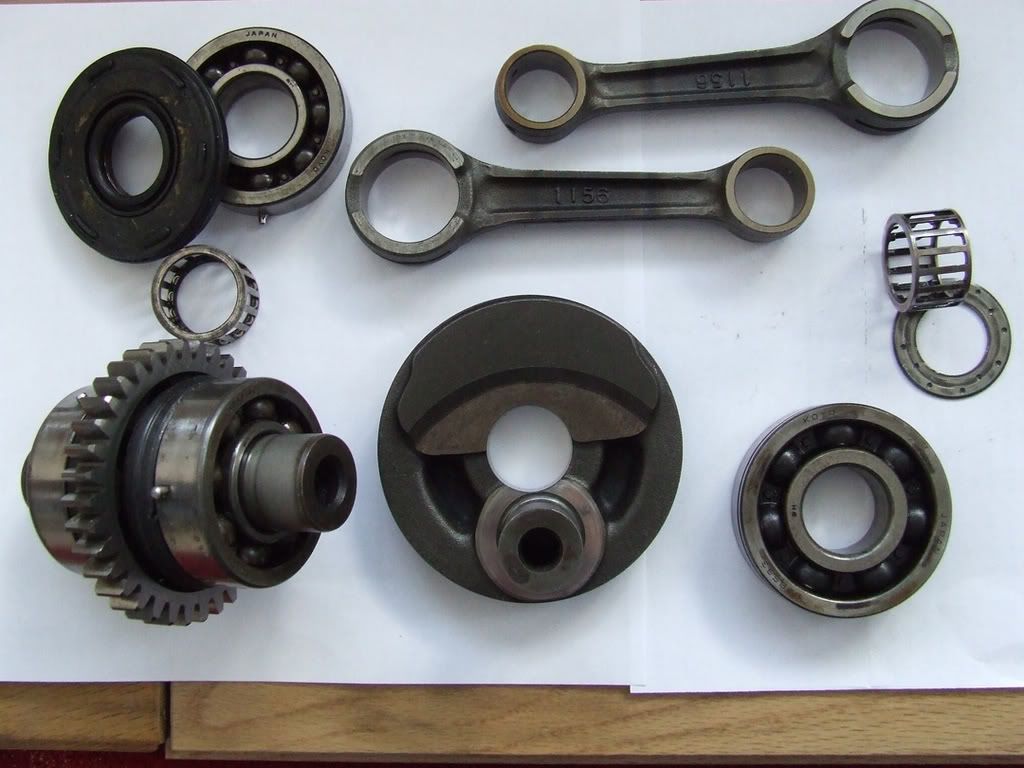kr-1s con rod length dimension??
Posted: Sat Oct 16, 2010 7:00 am
Goodmorning boys,anyone know the the length of kr1s con rod??is 106mm???? center to center??
thanks spyros
thanks spyros
Home of the Kawaski KR250 KR-1 KR-1S & KR-1R
http://www.kr-1s.co.uk/forum/
conrod's never were available from Kawasaki, it was a full cranck or nothing.s.mx51 wrote:T.S.I thanks a lot ,for the KR-1S all the parts is NLA here(greece)so i have to find cod rod and the other parts i need from an other 2stroke to fit.

either of these two rods would do the trickWPR130 Kawasaki KX125 81 - 8792 - 93 106 21 29 17 17
WPR132 Kawasaki KX125 94 - 97 106 19 29 17 17
falconman wrote: Or buy the rod kit from PJME.

s.mx51 wrote:Crank pin is irrelevant??
check this out:
Bob Weight Blues
When it comes to any kind of crankshaft purchase or if you are considering adding a set of new, lightweight pistons to an existing engine, balancing that rotating assembly can be challenging. One of the references you will run across is something called bob weight. This spec refers to the mass located on a single crankshaft journal that includes both the reciprocating and rotating weight portions of the entire assembly. Rotating weight refers to the mass of the bottom half of the connecting rod that is attached to the crankshaft. The reciprocating weight is basically everything from the middle of the connecting rod upward, including the piston, wristpin, and rings.
Every high-performance crankshaft has a specific bob weight value, such as 1,800 grams. A gram is a metric measurement equivalent to 11/428 ounce. An 1,800-gram bob weight is basically the amount of weight in each of the counterweights. However, you don't just add all the values up to determine bob weight. The formula is 100 percent of the rotating weight plus 50 percent of the reciprocating weight. Let's use an example to see how this breaks down:
Rotating weight (gm.) Reciprocating weight (gm.)
Rod bearing 50
Rod big end 420
Rod small end 180
Piston 450
Wristpin 80
Rings 38
Oil 2
Subtotal 470 750
Before we go further, remember we have a pair of reciprocating weights (two pistons) per crank journal. The math looks like this:
Half of reciprocating weight is 750/2 = 375 x 2 pistons per journal = 750 grams, while total rotating weight is 470 x 2 = 940 grams. Thus 750 + 940 = 1,690 grams.
If the bob weight figure for your new crankshaft is more than the bob weight of your new rods, pistons, and rings, then weight must be removed from the crankshaft in order to balance the assembly. This is a relatively simple task of precision-drillng a few holes in the crankshaft counterweights. If the bob weight figure for the crankshaft is lighter than the piston-and-rod combo, Mallory metal must be added to the crankshaft. Mallory is a very dense metal, more than twice the density of steel. A 11/42-inch-diameter, 31/44-inch-long slug of Mallory weighs 43 grams. The problem is that drilling a hole to place the Mallory in the crank removes roughly 24 grams, so the net gain is only about 19 grams. Thus adding 50 grams can be expensive because Mallory metal isn't cheap. It also means that researching your stroker-engine package carefully to avoid major balancing headaches and expenses is well worth the effort.